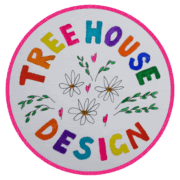It’s been half-term here this week which means no routine and lots of time to do all sorts of things at a lovely, leisurely pace, which makes me happier than a happy person in happy town!
I completed my second leaf painting. Technically this was a couple of weeks ago, but I always like to have a break and look at it from a distance to see if there’s any areas that start to bug me and since there hasn’t been, I now consider it finished.
It still needs to be varnished, but I have to let it dry thoroughly first, and in the meantime I’ve started my next two boards to continue the series.
So I thought I’d write a little about how I created this painting in the stages below:

Reference and Background:
As I’m in the park with Indie nearly every day, I’m always taking photos of anything that catches my eye and that I think could be a useful reference at some point.
I literally have hundreds, which I really need to index actually. It would make my life so much easier!
Anyway, the photo on the top left was the basic reference I used when beginning this painting and it was really the shape of the oak leaves and the colours in the water that I was using it for, rather than an exact match.
Starting by preparing the board with a couple of coats of gesso, I used a few sheets of wet strength tissue paper as a collage, gluing it over the entire board with Golden Gloss Medium. This creates very random creases, patterns and texture when you begin to paint over it, and I like that you don’t know where it will take you.
The next layers are created in acrylic paint, basically playing with the surface, adding colour, scraping, scratching and building up the base until it feels like there’s enough interest there.
This is most definitely the fun part because if there’s anything you don’t like, you can just paint over it in a ‘yep’ or a ‘nope’ kinda way.
First Stage and Second Stage:
So, obviously there are already several layers on the painting now, but this is the first stage of making it into ‘something’. As I start to look at the background, I can start to see shapes of leaves forming and I begin to draw them out, still using acrylic paint.
Moving around the whole board and repeating this process, you slowly build the shapes and colours. I like to turn the board around too as you’ll see different patterns that you can use.
Third Stage and Finish:
This is the point I switch to using oil paint as it gives a depth of colour that you can’t achieve with acrylic (which dries quite flat). The downside of oil paint is that it takes longer to dry of course, so I work on various points around the board every other day or so.
The final stage consists of working with the details, shading and highlighting until it reaches a point where you feel you are ready to stop.
And talking of stopping, it’s time for me to go and pack for our first trip of the year – a few days in Venice.
Tree xx
